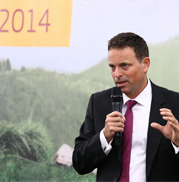 Your doctor or public health nurse took the vaccine itself from a fridge, prepared a syringe with a new, disposal needle, and administered the jab.
Your doctor or public health nurse took the vaccine itself from a fridge, prepared a syringe with a new, disposal needle, and administered the jab.
It’s so normal that we don’t even need to think about why the vaccine was kept in the fridge – or to consider what would happen if there was no fridge or no electricity.
But in the developing world, things are not always so straightforward. Electricity networks are not as well developed as in Europe. Similarly, transport infrastructure – roads and refrigerated vehicles – can leave a lot to be desired.
The trouble is that when vaccines are not kept at a stable temperature, their effectiveness can be affected. In fact, without adequate refrigeration, transporting a batch of vaccines on a scorching hot day in Africa can render them useless.
Made to last
That is why the EU offered a €2 million incentive for a solution to this problem. This prompted entries from 49 inventors and companies to suggest smarter ways of ensuring vaccines get to their destination intact.
The winner was CureVac, a small university-spinoff founded by Ingmar Hoerr who set up the company in 2000 to continue the work he did on his PhD.
Dr Hoerr told Vaccines Today that CureVac is working on vaccines using RNA technology to stimulate the immune system. The approach has the potential to allow the production of vaccines that can survive in high and low temperatures, he says.
“Vaccines produced in this way remain active even if heated to 60 degrees Celsius for one month – or if the temperature drops to minus 80 degrees.”




